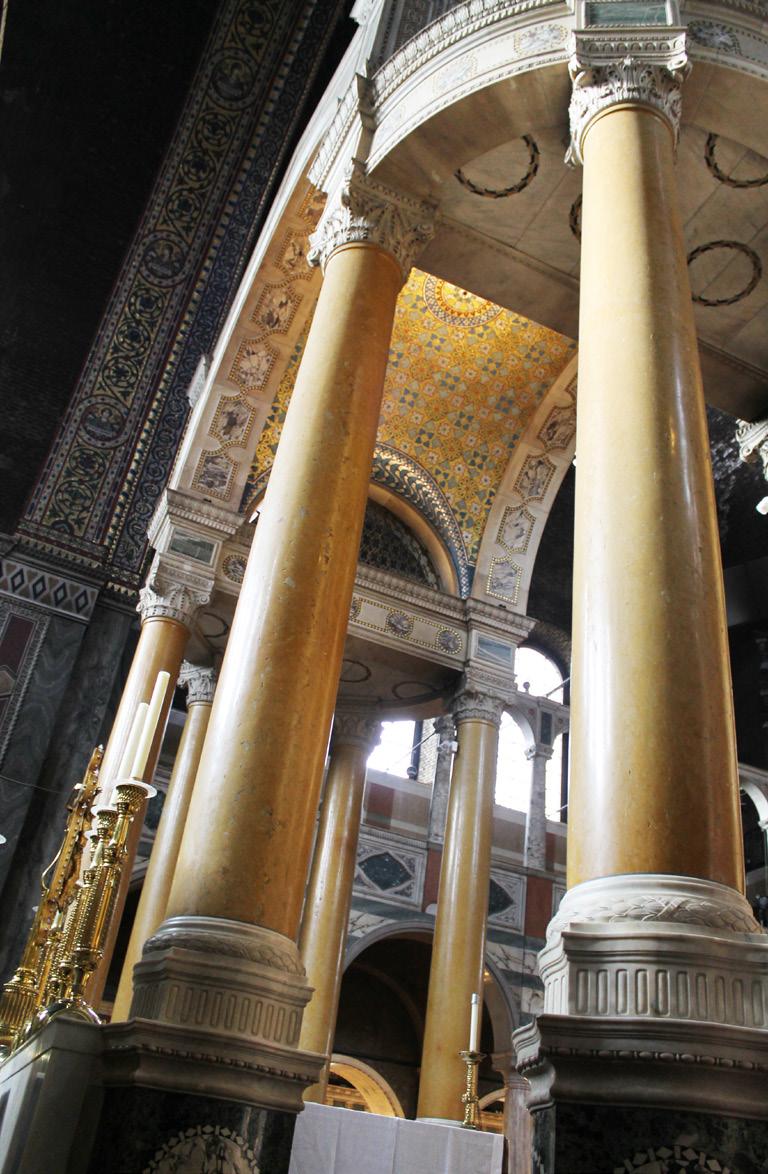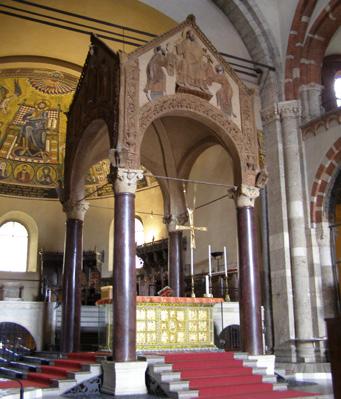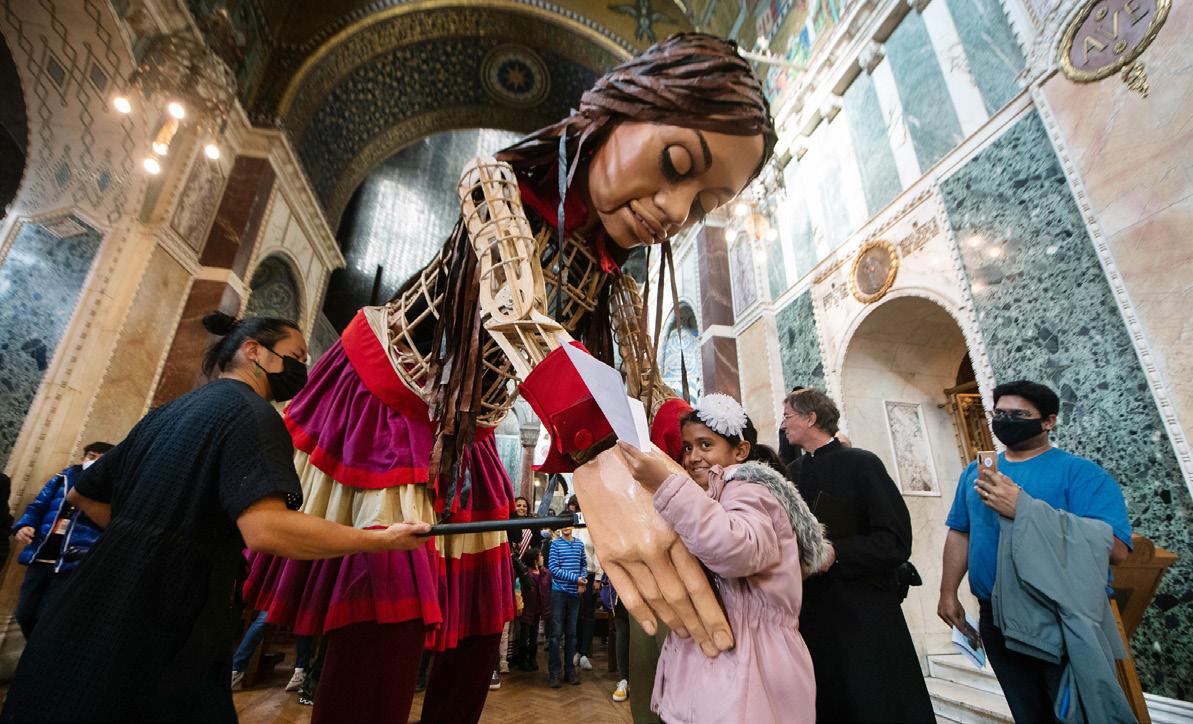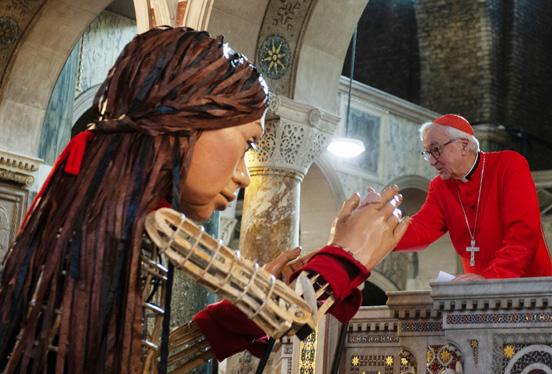
3 minute read
Cathedral History: The Baldacchino – A Shortened Story by Patrick Rogers 16
Fourteen feet of solid strength
unpacked in the Cathedral three were found to be broken and a fourth badly cracked. So the idea of prefabrication in Marseille was abandoned.
What then happened is unclear. Bentley had produced a number of drawings of the baldacchino prior to his death in 1902. In a very early one (B-22) in pencil he had drawn a decorative finial for its top. Initially this consisted of a pineapple mounted on a globe, then on the same sheet it becomes a cross above a globe and in subsequent coloured working drawings (B-24, 26, 34) just a gilt bronze cross 18 inches high. Two drawings of the baldacchino (B-23, 31) refer to a contract with the marble merchants Farmer & Brindley of 5 March 1903. In B-24, 27 and 33 the overall height, width and span above the altar have all been reduced by three feet and the columns are 14 feet high rather than Bentley’s 15; B-24 is also annotated ‘old onyx reduced in length.’ So Bentley’s dimensions were reduced, perhaps to try to save the onyx columns by making them shorter or simply to save on cost. Marshall was completely faithful to Bentley, but Vaughan was much more interested in economy. Authority to alter Bentley’s plans could only have come from him. This is supported by a letter in The Tablet of 19 September 1903 (after Vaughan’s death on 19 June) protesting against the ‘clipping and paring of a great artist’s careful and thoughtful work’ – the baldacchino.
It was not until after Archbishop Bourne had taken over at the end of 1903 that things moved on. A new contract was placed with Farmer & Brindley, eight columns of the yellow Verona on which Bentley had set his heart, arrived in July 1905 and, after 17 months’ work, the scaled-down baldacchino was unveiled on Christmas Eve 1906. So Vaughan never got to use his onyx columns. They lay in St Joseph’s Chapel for many years before being sold. In 1914 one was installed either side of Our Lady’s Altar in Birmingham Oratory where they are listed, rather ironically, as Siberian onyx. The fate of the others is unknown. Bentley did finally get his yellow Verona columns, albeit posthumously, but they are 14 feet long rather than the 15 he had planned. And neither on the drawings of the scaled-down baldacchino sent to Farmer & Brindley in 1904-05, nor on the structure revealed in December 1906, was there any sign of the little bronze cross. Like Cardinal Vaughan before him, Bourne had strong views on the Cathedral decoration. As far as the cross is concerned, it rather looks as if he did not like it.

The baldacchino in Sant’Ambrogio, Milan – an inspiration to J F Bentley

Making a new friend
Little Amal visits the Cathedral
Little Amal is the giant puppet at the heart of The Walk, travelling 8,000km in support of refugees. During 2021, the 3.5 metre-tall living artwork of a young Syrian refugee child has walked across Turkey, Greece, Italy, France, Switzerland, Germany, Belgium and the UK to focus attention on the urgent needs of young refugees.

The Cathedral was crowded with young and old – and their phones for pictures

© Mazur/CBCEW.org.uk A new use for the pulpit; the Cardinal greets Amal
The story began in Good Chance Theatre’s play, The Jungle. Amal appeared as a character who represented the hundreds of unaccompanied minors in the Calais migrant camp who were separated from their families. The play contributed to a global conversation about refugees and shared humanity, and Amal was brought to life as a giant puppet made by War Horse creators Handspring Puppet Company. Her journey from Gaziantep near the Turkey-Syria border to Manchester in the UK, has shone a light on the stories of the millions of young refugees who are displaced – and the many who are forced to risk arduous journeys for the chance of a better life.










